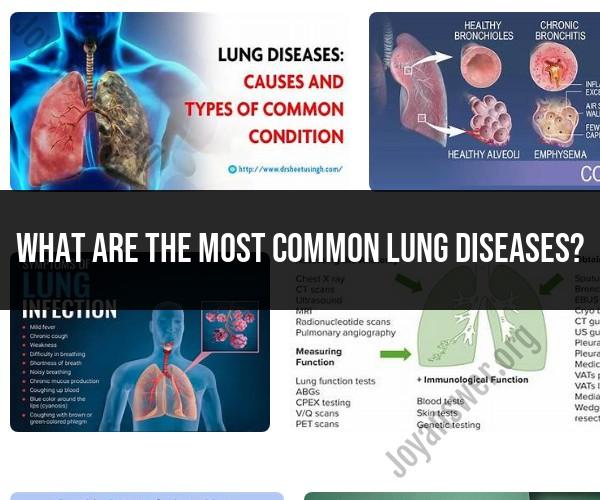What are the most common lung diseases?
Several lung diseases can affect respiratory health, with varying degrees of severity and causes. The most common lung diseases include:
Asthma: Asthma is a chronic condition that causes airways to become inflamed and narrow, leading to symptoms such as wheezing, coughing, and shortness of breath. It can be triggered by allergens, irritants, or respiratory infections.
Chronic Obstructive Pulmonary Disease (COPD): COPD is a group of progressive lung diseases, including chronic bronchitis and emphysema. It is often caused by long-term exposure to irritants like cigarette smoke and results in airflow obstruction.
Lung Cancer: Lung cancer is a malignant tumor that originates in the lungs and can be caused by smoking, exposure to radon gas, or other environmental factors. It is a leading cause of cancer-related deaths worldwide.
Pneumonia: Pneumonia is an infection of the lung tissue, often caused by bacteria, viruses, or fungi. It leads to symptoms such as fever, cough, and difficulty breathing.
Pulmonary Fibrosis: Pulmonary fibrosis involves the scarring and thickening of lung tissue, making it difficult for the lungs to function properly. It can be caused by various factors, including environmental exposures and certain medications.
Bronchitis: Acute bronchitis is a temporary inflammation of the bronchial tubes, often caused by viral infections. Chronic bronchitis, a type of COPD, involves persistent inflammation and mucus production in the bronchial tubes.
Cystic Fibrosis: Cystic fibrosis is a genetic disorder that primarily affects the respiratory and digestive systems. It leads to the production of thick, sticky mucus that can block airways and cause respiratory problems.
Interstitial Lung Disease (ILD): ILD refers to a group of disorders characterized by inflammation and scarring of the interstitium, the tissue that supports the air sacs in the lungs. Various factors, including autoimmune diseases and environmental exposures, can cause ILD.
Tuberculosis (TB): Tuberculosis is a bacterial infection caused by Mycobacterium tuberculosis. It primarily affects the lungs but can also involve other organs. Symptoms include a persistent cough, fever, and weight loss.
Lung Nodules: Lung nodules are small, round growths in the lungs. While some are benign, others may be cancerous. They are often discovered incidentally during imaging studies.
Lung Abscess: A lung abscess is a pocket of infected and inflamed tissue in the lungs, typically resulting from bacterial infections. It can lead to symptoms like coughing, chest pain, and fever.
Pulmonary Embolism (PE): A pulmonary embolism occurs when a blood clot, typically from the legs, travels to the lungs and blocks a pulmonary artery. It is a medical emergency and can cause chest pain, shortness of breath, and even death.
These are some of the most common lung diseases, but there are many other less prevalent conditions that can affect respiratory health. Early diagnosis and appropriate treatment are essential for managing these conditions and improving lung function. If you or someone you know experiences respiratory symptoms, it's crucial to seek medical attention for a proper evaluation and diagnosis.












